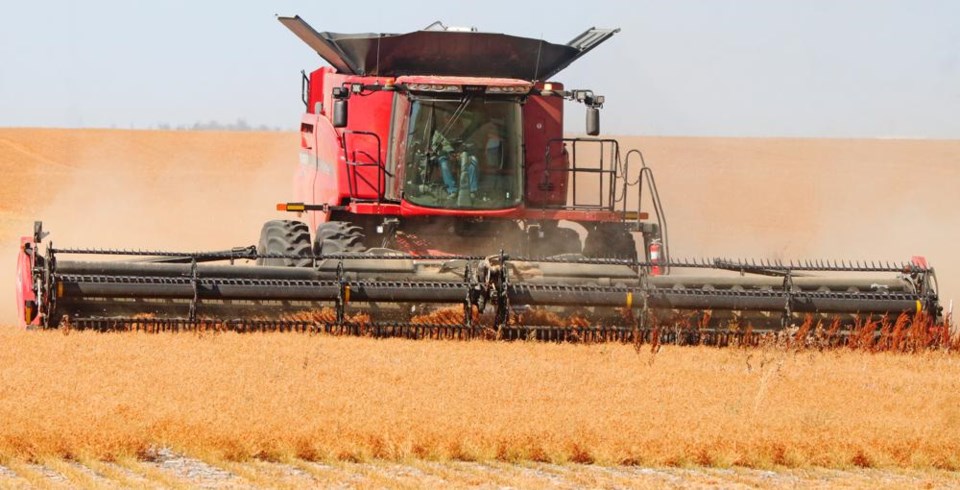OUTLOOK - Another very hot, dry week advanced harvest progression throughout the region with eight per cent of the crop now harvested. This is up from the five-year average of five per cent. Producers are making short work of pulse crops they had desiccated in previous weeks, and they are now starting to swath spring cereals and canola to prep them for harvest. In many parts of the region, crop yields are reported as being below average after crops have once again suffered through an extremely hot dry growing season.
Fifty-five per cent of the fall rye, 29 per cent of lentils and 24 per cent of field peas have been combined so far. In addition, five per cent of barley and two per cent of oats have been swathed.
Very few areas of the region received rainfall this past week which helped harvest continue without delay, but was detrimental to pasture and hay lands. Many producers in the region are concerned with how little soil moisture they have. Without several large rainfalls in the fall after harvest is complete, there may not be enough soil moisture next spring to get the 2023 growing season underway. Some of the areas of the region that saw rain are Rosthern which received 34 mm, Eyebrow and Dinsmore with six mm and the Conquest area that received one mm.
Crop district 6B is one of the driest areas of the province with most RM’s reporting less than 200 mm of rain since April 1st. Regional cropland topsoil moisture is rated as 36 per cent adequate, 48 per cent short and 16 per cent very short. Hay and pasture land topsoil moisture is rated as 30 per cent adequate, 50 per cent short and 20 per cent very short.
The majority of crop damage this week was due to drought, heat, wind and grasshoppers. Producers are extremely worried about the number of grasshoppers they are seeing in their cropland and pastures and what next year will look like if conditions once again favour grasshopper development.
Farmers are busy getting equipment ready, desiccating and swathing crops and combining in some areas.

.JPG;w=120;h=80;mode=crop)


